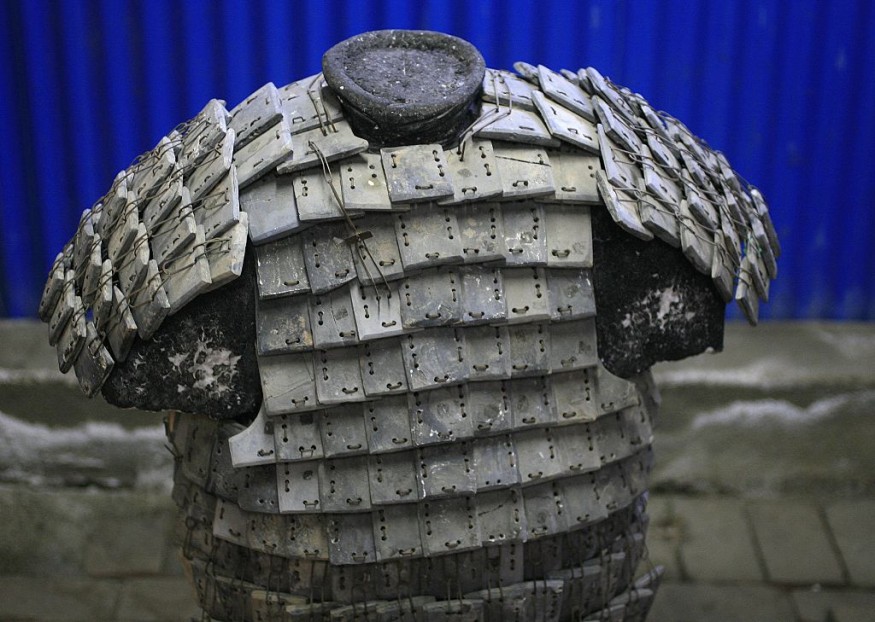A recent archeological research revealed a one-of-a-kind artifact from Asia that could tell a historical event of the region. Sometime throughout 2,500 years ago, an individual from China made military garments for a living. Among his specialty is a unique armor built from over 5,000 leather scales. The apparel was created with outstanding detail that its design almost resembles a natural fish scale.
Leather Armor from China Discovered

The armor from China is theorized to have been crafted as an apron-like waistcoat. University of Zurich's Institute of Asian and Oriental Studie expert Patrick Wertmeann, who authored the study, said in a Live Science report that the manufacturing process of the armor is unparalleled, as it produced a light and highly efficient type of defensive garment perfectly for a large ancient army.
Due to the rarity of its structure and the approach used for its completion, the armor was considered an example of early bionic technology. German Archaeological Institute's Eurasia Department and Beijing Branch Office expert Mayke Wagner, who co-authored the paper, said that the fish-like scales attached to the armor were analyzed to have a strong amount of protection that is necessary to keep the skin of its wearer from being stabbed or inflicted with any moderate damage.
The ancient bionic leather garment was unearthed from China's large Yanghai cemetery, which also serves as an excavation site for the culture's ancient history. The site is located just near the outskirts of the vast Taklamakan Desert. The first discovery of the whole archeological site was conducted by the nearby local villagers in the 1970s.
The Yanghai cemetery eventually became a hotspot for numerous ancient burials in the country. When 2003 hit the calendar, the archeological community could unearth over 500 variety of burials hidden on the place. Today, one of the greatest finds from the cemetery was leather armor.
Archeological Finds in the Yanghai Tombs and the Rarity of Leather Scale Armors
According to the historical records, the Yanghai cemetery was maintained and used for 1,400 years since the 12th century BC. According to Chinese scholars, the population that ran the cemetery was the group residing near the Tarim Basin, also known as the Cheshi people. Wertmann said that the specified group could thrive in the region with a handful of resources and was already equipped with agricultural practices. Alongside farming and animal nurseries, the Cheshi people had proficient horse-riding and archery skills.
Contrary to popular belief, leather scale armors are rare. One of the few garments was discovered in the ancient Egyptian tomb of the famous pharaoh Tutankhamun. The discovery of the 14th century BC leather garment was the only leather scale armor recovered by scientists throughout the history of archeological studies alongside the newly excavated piece. A third leather scale armor surfaced and was kept at New York's Metropolitan Musem of Art, but its origin remains unsolved.
The new garment was discovered on a tomb of an individual estimated to have died around his 30's. Alongside the armor and the remains, there were other artifacts on the collection, such as horse chee pieces, pottery, and sheep's skull. A plant stuck on the armor was analyzed to have a radiocarbon date between 786 BC and 543 BC. Through digital reconstruction, the armor reached almost 5 kilograms of weight. The study was published in the journal Quaternary International, titled "No borders for innovations: A ca. 2700-year-old Assyrian-style leather scale armour in Northwest China."
RELATED ARTICLE : Full-Scale Imaging of Egyptian Pharoah Amenhotep I Face Shown for the First Time After 3,000 Years Through CT Scan
Check out more news and information on Archaeology in Science Times.











